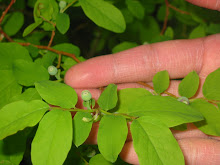The Camosun bog Restoration Group and
Co-design Group will be engaging the Killarney Community to envision the ghost of a bog that once thrived in this neighbourhood. And artist Pat Beaton, organizer of Earthmakers, will then lead a community art project where participants create prints for a community mural. For details on this free event, click on the picture :
Laurence Brown did some preliminary research on Killarney bog and, by examining some fascinating archival maps, this is what he discovered:
Most of our knowledge about the Killarney bog comes from surveys of the Fraser River lowlands carried out by the Royal Engineers between 1858 and 1880. These observations are consolidated in a map drawn up by North, Dunn and Teversham. The portion adjacent to the Killarney bog is shown below
The surveyors reported the central area as having organic soil. This would be either peat from sphagnum moss or partially decomposed sedges and rushes. The surface vegetation was reported as Labrador tea and cranberry. The surveyors called this a marsh but we would call it either a bog or a fen. The area round the bog was covered with grass. There is some possibility that this area was burnt by First Nations in order to improve the cranberry crop.
A contour map of the area adjacent to Killarney park is shown below (VanMap from City of Vancouver website)
The area forms a bowl with lower areas trending north from the east and west edges. These form two of the headwaters of Still Creek (see “Lost Streams of the Lower Fraser Valley” published by DFO). It seems likely that the original bog occupied the area roughly below the 94m contour.
I have combined the two maps below
The match is not particularly good but given that there has been 150 years between the two surveys and a lot has happened in this time it is not too surprising.
Interestingly, a quick survey of the area showed a construction site (see red dot in map above) with indications of some peat in the excavation



























